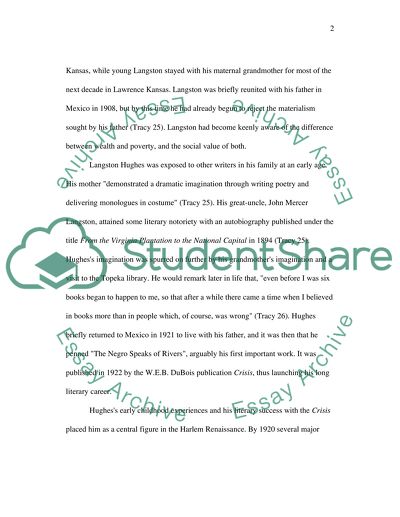Cite this document
(Langston Hughes's Childhood Essay Example | Topics and Well Written Essays - 1500 words, n.d.)
Langston Hughes's Childhood Essay Example | Topics and Well Written Essays - 1500 words. Retrieved from https://studentshare.org/literature/1506831-langston-hughes-college-essay
Langston Hughes's Childhood Essay Example | Topics and Well Written Essays - 1500 words. Retrieved from https://studentshare.org/literature/1506831-langston-hughes-college-essay
(Langston Hughes'S Childhood Essay Example | Topics and Well Written Essays - 1500 Words)
Langston Hughes'S Childhood Essay Example | Topics and Well Written Essays - 1500 Words. https://studentshare.org/literature/1506831-langston-hughes-college-essay.
Langston Hughes'S Childhood Essay Example | Topics and Well Written Essays - 1500 Words. https://studentshare.org/literature/1506831-langston-hughes-college-essay.
“Langston Hughes'S Childhood Essay Example | Topics and Well Written Essays - 1500 Words”, n.d. https://studentshare.org/literature/1506831-langston-hughes-college-essay.


